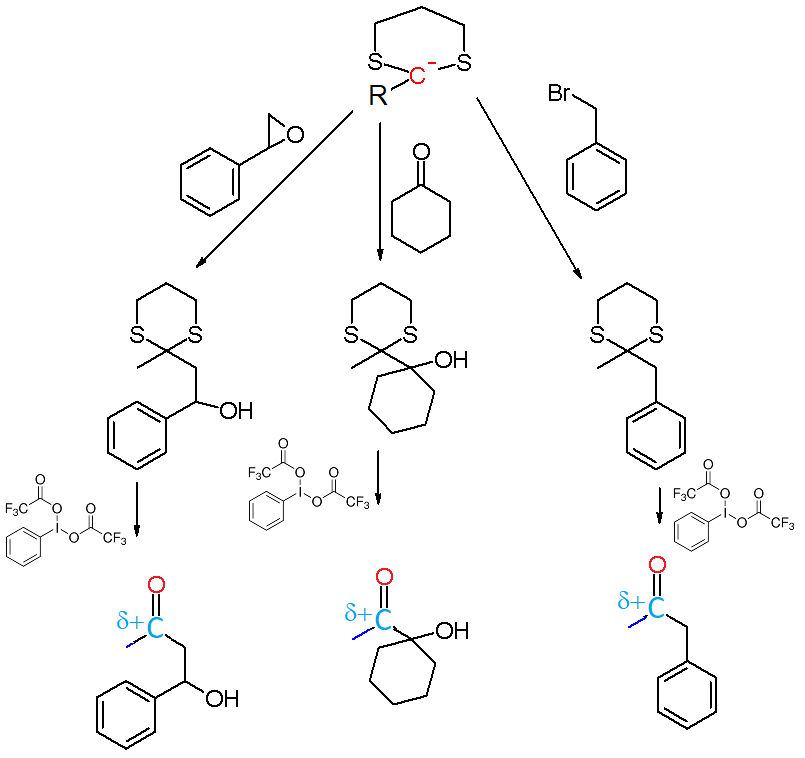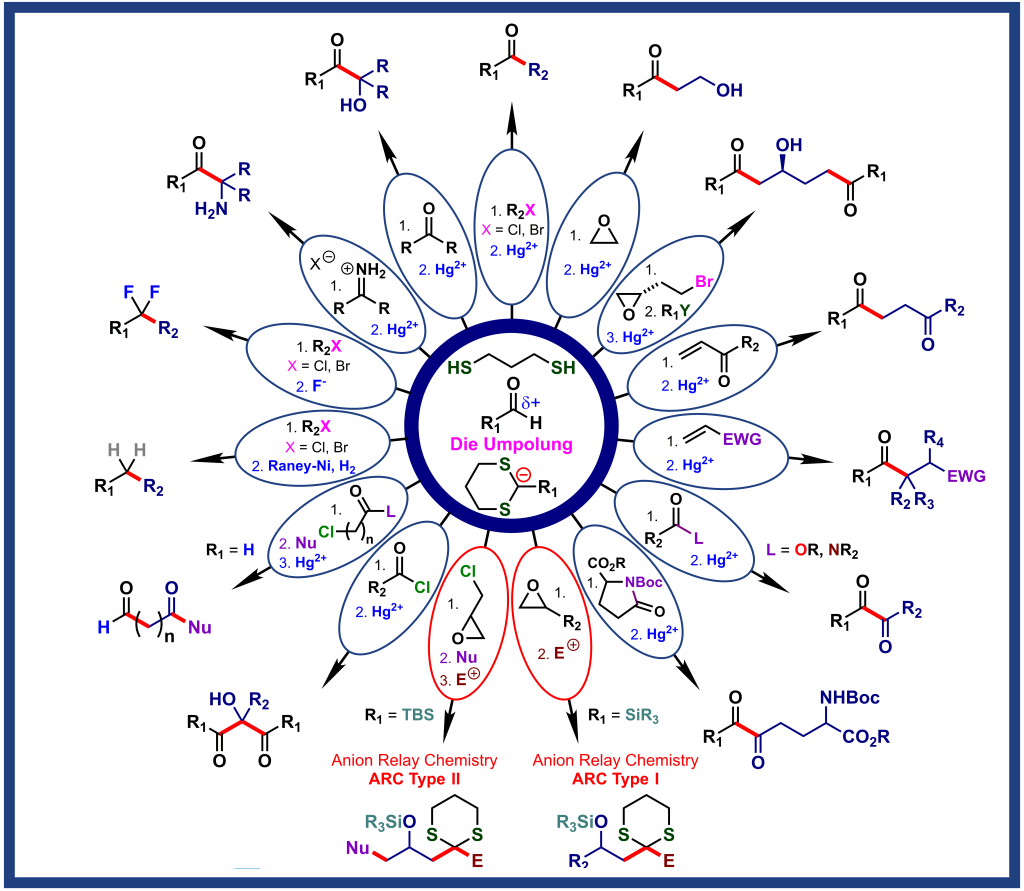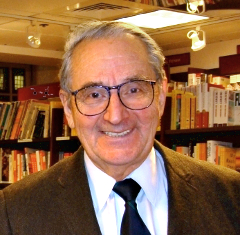UMPOLUNG
(POLARITY INVERSION)
The term UMPOLUNG comes from German and literally means 'POLARITY INVERSION'.
It was introduced by Dieter Seebach and E.J. Corey.
Retrosynthetic analysis implies polarity analysis that many times leads to umpolung tactics to synthesize a target molecule.
The classical example is the dithiane chemistry and the Corey-Seebach reaction.
In an aldehyde, the carbonyl carbon is electrophilic.
However, if one transforms it into a dithiane by thioketalization with 1,3-propanedithiol, the proton on the carbon in between the two sulfur atoms is relatively acidic and can be transformed into a carbanion.
The polarity of the former carbonyl carbon is thus inverted.
One can hence perform nucleophilic reactions that would have directly been not possible with the carbonyl.
The carbonyl can be reverted by a number of different reagents like those of hypervalent iodine.
Here is a useful map of the different reactions that can be achieved from the deprotonated 1,3-dithiane derived from an aldehyde.
The red bonds are those newly formed by this procedure.
Dieter Seebach is a German chemist known for his synthesis of biopolymers and dendrimers, and for his contributions to stereochemistry. He was born on 31 October 1937 in Karlsruhe. He studied chemistry at the University of Karlsruhe (TH) under the supervision of Rudolf Criegee and at Harvard University with Elias Corey finishing in 1969. After his habilitation he became professor for organic chemistry at the University of Giessen. After six years he was appointed professor at the ETH Zurich where he worked until he retired in 2003.
Elias James "E.J." Corey (born July 12, 1928) is an American organic chemist. In 1990, he won the Nobel Prize in Chemistry "for his development of the theory and methodology of organic synthesis", specifically retrosynthetic analysis. Regarded by many as one of the greatest living chemists, he has developed numerous synthetic reagents, methodologies and total syntheses and has advanced the science of organic synthesis considerably.



.jpg)
